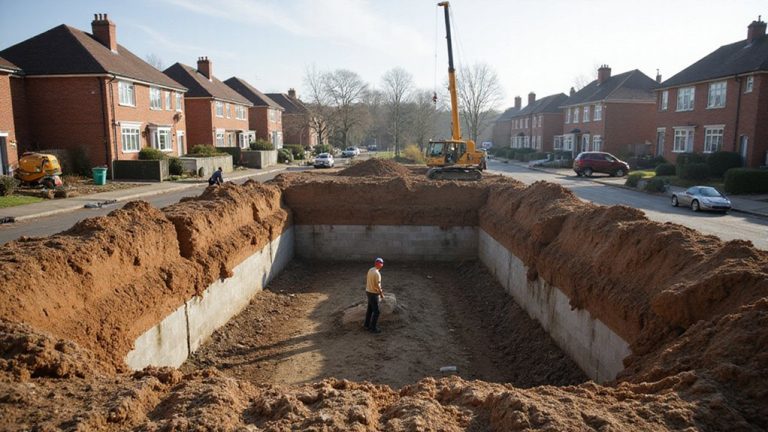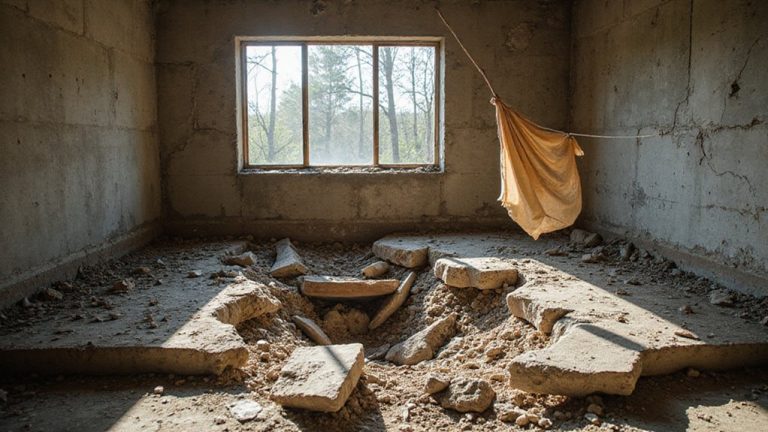Struggling with a shaky foundation can be a stressful and expensive ordeal. Fortunately, there are several repair methods available, each with its own pros and cons. While underpinning may provide long-term stability, it’s an intrusive process. Alternatively, mudjacking offers a quicker fix, but it’s just a temporary solution. With so many options to ponder, it’s pivotal to understand the unique benefits and drawbacks of each approach to make an informed decision that fits your home’s needs and your budget. Exploring these foundation repair methods in detail can help you determine the most effective and cost-efficient solution for your property.
Underpinning
If your home’s foundation has started to sink, settle, or crack, supporting may be the solution you need. Undergirding is a process where new foundations are built underneath the existing one, using techniques like soil displacement and hydraulic compression. Foundation piers can stabilize a basement in areas with poor soil conditions, providing additional structural support during the underpinning process. This reinforces the structure and prevents further sinking or settling. The process involves excavating underneath the home, installing new supports, and filling the gap with concrete or other materials. Undergirding can be an effective solution, but it’s a complex and invasive process that may require temporary relocation during the repairs. Consider the potential interference and cost before deciding if undergirding is right for your home.
Mudjacking
Mudjacking, also known as slabjacking, offers a cost-effective solution for addressing uneven or sunken concrete slabs. This method involves drilling holes in the slab and injecting a cement-based grout or “mud” beneath it. The grout fills any voids and compacts the soil, lifting the slab back into its proper position. Foundation stabilization solutions like mudjacking are crucial for addressing underlying soil issues that can compromise structural integrity.
Effective for addressing issues caused by soil compaction or washout
Relatively quick and non-disruptive installation process
More affordable compared to other foundation repair methods
Temporary fix that may require future maintenance or re-leveling
Mudjacking is a practical option for homeowners looking to quickly and economically restore their concrete surfaces.
Helical Piers
Another effective foundation repair method is Helical Piers. Helical piers are long, screw-like steel shafts that are driven deep into the soil to stabilize and support your home’s foundation. Unlike mudjacking, Helical piers don’t require any deep excavation. Instead, they’re installed by screwing them into the ground, making them a great option if you don’t want to deal with the mess and interference of digging.
Helical piers can also be used to improve soil stabilization and help prevent future foundation issues. If you’re looking for a reliable and minimally invasive foundation repair method, Helical piers might be worth considering.
Polyurethane Injections
While mudjacking may be a familiar foundation repair option, polyurethane injections offer a versatile and efficient alternative. This method involves injecting a specialized polyurethane foam into the soil beneath your home, which then expands to fill voids and stabilize the foundation.
Polyurethane injections can address issues like soil compaction and moisture control, helping to prevent further settling and damage. The process is relatively quick, with minimal impact to your home and landscaping. Polyurethane is a durable material that can withstand the elements, making it a long-lasting solution. This approach is often more cost-effective compared to other foundation repair methods.
Slabjacking
If your home’s foundation has settled, slabjacking may be a cost-effective solution. Slabjacking is a process where a cement-based grout is injected under the sunken slab, raising and stabilizing it. The grout fills voids and compacts the soil, halting ground settlement.
This procedure is less invasive than full foundation replacement, making it an attractive option. While slabjacking can’t address major structural issues, it’s a practical choice for correcting uneven floors and small cracks. The process is relatively quick and won’t interrupt your daily life.
If your home needs foundation repair, consider the benefits of slabjacking for soil stabilization and ground settlement.
Piling Foundation Repair
If your home’s foundation has settled noticeably, piling foundation repair may be worth considering. This method involves driving steel or concrete piles deep into the soil to stabilize and support the structure.
The key benefits of piling foundation repair include:
- Improved soil stabilization: The piles help distribute the home’s weight more evenly, preventing further settling.
- Augmented load distribution: The piles transfer the foundation’s weight directly to stable, load-bearing soil layers, reducing strain on the soil.
- Minimal alteration: Piling repair can often be done without excavating the entire foundation.
- Durability: Piles provide a long-lasting, permanent solution to foundation issues.
Carbon Fiber Reinforcement
Carbon fiber reinforcement is an innovative approach that can strengthen the integrity of your home’s foundation. This method involves strategically placing carbon fiber strips along the foundation walls to bolster their structural integrity. The slim, unobtrusive material minimizes visual impact, making it an attractive option for homeowners concerned about the aesthetic of their property.
Foundation Piering
Foundation piering is a reliable method for addressing issues with an unstable or settling foundation. This approach involves:
- Drilling holes into the soil beneath the foundation
- Inserting steel or concrete piers to support the structure
- Raising the foundation back to its original position
Foundation piering can substantially improve a home’s load-bearing capacity and stability, even in challenging soil conditions. It’s a durable solution that can provide long-lasting support for your home.
While the installation process may be intrusive, the peace of mind and structural integrity it delivers make foundation piering a worthy investment for many homeowners.
Frequently Asked Questions
What Is the Best Foundation Repair Method for My Home?
Performing a soil composition analysis and structural integrity assessment can help determine the best foundation repair method for your home. Consider solutions that address your specific needs and provide lasting stability.
How Long Does Each Foundation Repair Method Typically Take?
The repair duration and crew size required depend on the method. Piers can take 1-2 days with a small crew, while a full foundation replacement may take weeks with a larger team. Choose the option that fits your timeline and budget.
What Factors Determine the Cost of Foundation Repair?
Several factors determine the cost of your foundation repair, including the extent of the damage, the repair method required, and the materials and labor needed. Understanding these cost estimation factors can help you prepare for the repair cost.
Can I DIY Any of These Foundation Repair Methods?
You can DIY some foundation repair methods, but the feasibility depends on the complexity. Minor issues may be manageable, but major structural problems typically require professional knowledge to implement safely and effectively.
Will My Home’s Value Increase After Foundation Repair?
Foundation repair can potentially increase your home’s resale value, providing a nice enhancement to your property’s worth. The extent of the value increase will depend on the specifics of the repair work done.



